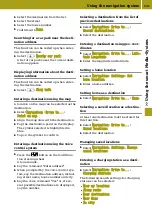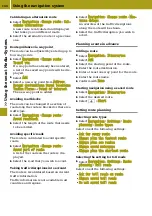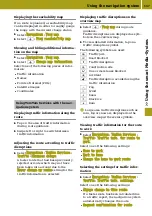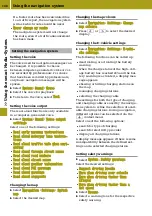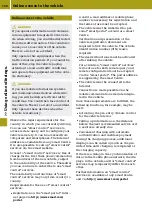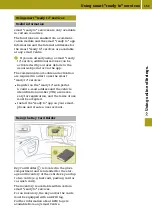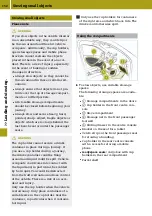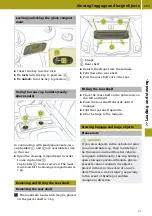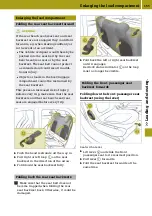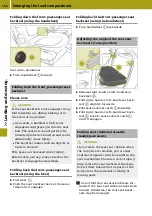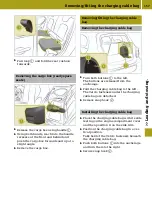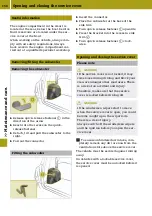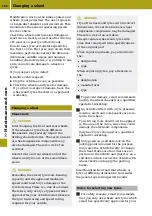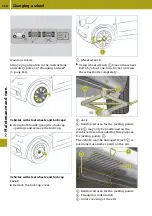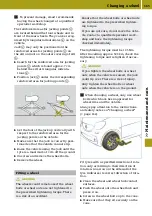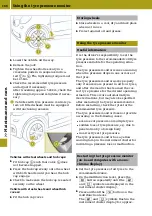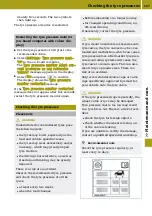
R
Always stow objects so they cannot be
thrown around in these or similar sit-
uations.
R
Always ensure that objects do not pro-
trude over the top of stowage compart-
ments or ruffled pockets.
R
All closable stowage compartments
should be closed before beginning your
journey.
R
Always stow and secure heavy, hard,
pointed, sharp-edged, fragile objects or
objects which are too large behind the
last bench seat or under the passenger
seats.
The handling characteristics of a laden
vehicle are dependent on the distribution of
the load within the vehicle.
Observe the following loading guidelines
when loading and transporting luggage and
loads:
R
do not exceed the maximum permissible
gross vehicle weight or the permissible
axle loads for the vehicle (including
occupants)
R
the load compartment is the preferred
place to stow objects
R
stow heavy loads as far forwards and as
low down in the load compartment as
possible
R
the load must not protrude above the
upper edge of the seat backrests
R
always place the load against the rear or
front seat backrests. Make sure that the
seat backrests are securely locked in
place
R
always transport the load behind unoc-
cupied seats if possible
R
secure the load and luggage suitably
Opening the boot
!
The tailgate swings upwards and to the
rear when opened. Therefore, make sure
that there is sufficient clearance above
and behind the tailgate.
X
Press the
%
button on the key.
X
Press button
:
.
X
Fold the tailgate up.
Closing the boot
X
Pull the tailgate down and close.
X
Press the
&
button on the key.
The vehicle is locked.
Using lashing eyelets
To prevent damage, observe the following:
R
Secure the load using lashing eyelets
:
.
R
Distribute the load on the lashing eyelets
evenly.
R
Do not use elastic straps or nets.
R
Pad any sharp edges.
154
Using lashing eyelets
>> Loading and stowing
.


